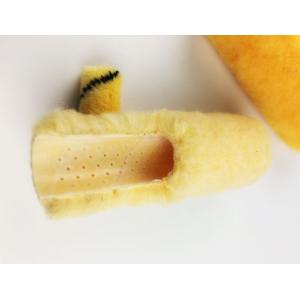Contact person: Ms. Connie He
Position:
Address: Zhuangquan, Guyang Town, Dantu District, Zhenjiang City, Jiangsu Province, China
Country: China
Phone: 051186220230 - Mobi: 13805282156
Electric Paint Roller Sleeve
Price:
Electric Paint Roller Sleeve
Description:
Internally-fed roller covers distribute paint evenly across the roller, creating a smooth,professional paint finish on your walls. With a 3/4 in. nap, this roller cover is perfect for walls with minimal texture. A high absorbency nap material holds a large volume of paint for continuous rolling.
Specification:
3/4 in. nap for semi-smooth surface application
High density polyester
Standard 1-1/2" Polypropylene Core
High absorbency nap material holds a large volume of paint
Core allows the paint to flow from the head of the power roller
For use with power painting systems
SKU List
For more details please visit www.cohwabrush.com
Description:
Internally-fed roller covers distribute paint evenly across the roller, creating a smooth,professional paint finish on your walls. With a 3/4 in. nap, this roller cover is perfect for walls with minimal texture. A high absorbency nap material holds a large volume of paint for continuous rolling.
Specification:
3/4 in. nap for semi-smooth surface application
High density polyester
Standard 1-1/2" Polypropylene Core
High absorbency nap material holds a large volume of paint
Core allows the paint to flow from the head of the power roller
For use with power painting systems
SKU List
SIZE | NAP | CORE | PACK |
9" | 3/8"(10mm) | 1-1/2"(38mm) | 100 |
9" | 1/2"(12mm) | 1-1/2"(38mm) | 100 |
9" | 3/4"(18mm) | 1-1/2"(38mm) | 100 |
For more details please visit www.cohwabrush.com
SEND INQUIRY
Please fill in fully your information to send email
CATEGORY














 Agriculture
Agriculture